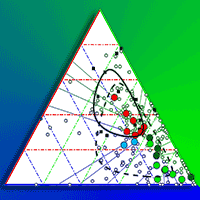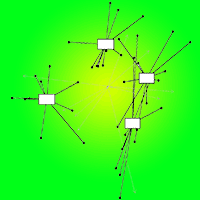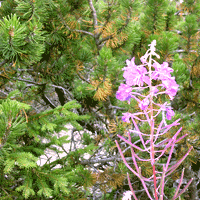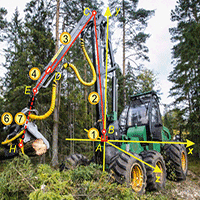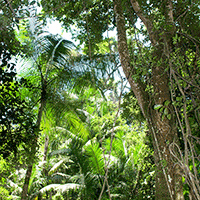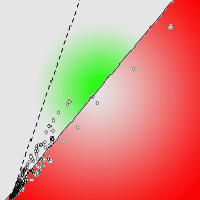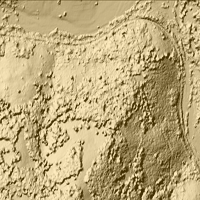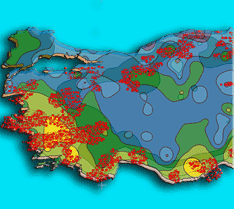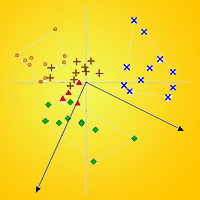
Diversity pattern of vegetation in and around proposed Kotlibhel hydroelectric project along the Alaknanda River in Garhwal Himalaya (India)
V Singh , S Dasgupta, V Jhaldiyal, DS Chauhan, NP Todaria
iForest - Biogeosciences and Forestry, Volume 4, Issue 1, Pages 38-43 (2011)
doi: https://doi.org/10.3832/ifor0557-004
Published: Jan 27, 2011 - Copyright © 2011 SISEF
Technical Reports
Abstract
The study made an assessment of the floral status of the project site of Kotlibhel hydrolectric project (Stage 1B) at Alaknanda valley in the Ganga river system (India). Study area included two broad zones: Influence (IZ) and Submergence zone (SZ). Influence zone showed higher species richness in all vegetation strata. In the upper layer, there were 26 tree species, middle layer consisted of 32 shrub species and ground layer (understory) contained 41 species. Maximum density in the tree layer (36.4 plants/ha) was found for Haldinia cordifolia in the Influence zone. On the other hand, shrub and herb species showed highest density in the Submergence zone. Highest density of shrubs species was recorded for Ficus hederacea (844.0 plants/ha), while highest density of herbs for Desmodium triflorum (5540.1 plants/ha). Significant differences in Shannon diversity were found between Influence and Submergence zones for shrub and herb species (P<0.001), but not for trees. Simpson diversity was not significantly different for tree, shrub and herb species in both zones. Differences in Margalef species richness were found (P<0.001) for all vegetation layers in both zones. Distribution pattern of the species showed contagious patterns for both Submergence and Influence zone. Maximum Shannon diversity (3.561) was recorded in the Influence zone for herb species, followed by shrubs species (3.184) and tree species (2.593). Submergence zone showed lower Shannon diversity than the Influence zone, where a higher Shannon diversity (3.480) was recorded for herb species. Pinus roxburghii showed the highest IVI in the Influence zone (71.88) and Mangifera indica in Submergence zone (58.77).
Keywords
Authors’ Info
Authors’ address
S Dasgupta
V Jhaldiyal
DS Chauhan
NP Todaria
Department of Forestry, HNB Gharwal University Campus, Srinagar, Garhwal, Uttarakhand (India)
Corresponding author
Paper Info
Citation
Singh V, Dasgupta S, Jhaldiyal V, Chauhan DS, Todaria NP (2011). Diversity pattern of vegetation in and around proposed Kotlibhel hydroelectric project along the Alaknanda River in Garhwal Himalaya (India). iForest 4: 38-43. - doi: 10.3832/ifor0557-004
Paper history
Received: Sep 10, 2010
Accepted: Dec 13, 2010
First online: Jan 27, 2011
Publication Date: Jan 27, 2011
Publication Time: 1.50 months
Copyright Information
© SISEF - The Italian Society of Silviculture and Forest Ecology 2011
Open Access
This article is distributed under the terms of the Creative Commons Attribution-Non Commercial 4.0 International (https://creativecommons.org/licenses/by-nc/4.0/), which permits unrestricted use, distribution, and reproduction in any medium, provided you give appropriate credit to the original author(s) and the source, provide a link to the Creative Commons license, and indicate if changes were made.
Web Metrics
Breakdown by View Type
Article Usage
Total Article Views: 58663
(from publication date up to now)
Breakdown by View Type
HTML Page Views: 47160
Abstract Page Views: 3703
PDF Downloads: 6225
Citation/Reference Downloads: 21
XML Downloads: 1554
Web Metrics
Days since publication: 5453
Overall contacts: 58663
Avg. contacts per week: 75.31
Citation Metrics
Article Citations
Article citations are based on data periodically collected from the Clarivate Web of Science web site
(last update: Mar 2025)
Total number of cites (since 2011): 6
Average cites per year: 0.40
Publication Metrics
by Dimensions ©
Articles citing this article
List of the papers citing this article based on CrossRef Cited-by.
References
Vegetation structure and community patterns of Tehri Dam Submergence Zone, Uttarakhand, India. EurAsian Journal of Biosciences. 3: 40-49.
Gscholar
Woody vegetation structure along an altitudinal gradient in a part of Garhwal Himalaya. Journal of Hill Research 11 (1): 26-31.
Gscholar
Plant ecology workbook. Laboratory field reference manual. Burgers Publication Co., MN, USA, pp. 193.
Gscholar
Biodiversity and landscapes. Cambridge University Press, New York, USA, pp. 3-27.
Gscholar
Quantitative analysis of tree species in two community forests of Dolpa district, mid-west Nepal. Himalayan Journal of Sciences 2 (3): 23-28.
Gscholar
Phytosociological analysis of Arnigad micro watershed in Mussoorie hills of Garhwal Himalaya. Indian Forester 132 (1): 19-30.
Gscholar
A phytosociological analysis of woody species in forest in forest communities of a part of Kumaon Himalaya. Vegetatio 50: 2-3.
Gscholar
The mathematical theory of communication. University of Illinois Press, Urbana, IL, USA, pp. 117.
Gscholar
Forests of Himalaya: structure, functioning and Impact of management. Gyanodaya Prakashan, Nainital, India.
Gscholar

